The Suffragist With a Passion for Saving Charleston’s Historic Architecture
A century ago, Susan Pringle Frost tirelessly campaigned to save these South Carolina buildings from destruction
/https://tf-cmsv2-smithsonianmag-media.s3.amazonaws.com/filer/62/03/6203886b-deb5-4f3f-9be6-de81be32cc5f/susanpringlefrost-main.jpg)
In 1909, the South of Broad area in Charleston, South Carolina, was filled with slums and decaying historic homes. That same year, Charleston native Susan Pringle Frost was just dipping her toe into the world of real estate. She’d been working as a U.S. District Court stenographer since 1902, but was distressed by the sad state of her city.
“There were ills aplenty in the Charleston of the early 20th century,” says Betsy Kirkland Cahill, chair of the board of the Preservation Society of Charleston, in an email. “Impoverished by an unrelenting sequence of natural disasters—fire, earthquake, tornado—and ravaged by the Civil War, the city had as many rats as people. Trash was everywhere in the streets, along with dirty water from the butcher pens; there were 12,000 privies on the peninsula, and 434 cows. Streets were unpaved, and in many yards, the only source of water was a single spigot. The beautiful, gracious houses that had characterized the antebellum city were sinking into disrepair and decay.”
First settled by the English in 1670, Charles Town, named after King Charles I, was originally located across the Ashley River from the peninsula it sits on now. By 1680, the city had grown, and relocated to the current spot, where it soon became known for elegant architecture and bustling trade. In the 1750s, it was the largest and richest town south of Philadelphia. It officially became “Charleston” in 1782.
Frost was born in the South of Broad neighborhood, south of where Broad Street intersects the peninsula, on January 21, 1873, to Dr. Francis LeJau Frost and Rebecca Brewton Pringle, both from old Charleston rice planting families. For her advanced schooling, Frost attended the prestigous Saint Mary’s Episcopal boarding school in Raleigh. Two years in, though, the family's plantations started to decline and her father's fertilizer business failed. She left school in 1891 to learn basic stenography skills and then took jobs as a stenographer to help support her then-impoverished family.
Frost's stenography work introduced her to two employers that would have a large impact on her future: architect Bradford Lee Gilbert and the U.S. District Court. She developed an interest in historical architecture while working for Gilbert, and the women's suffrage movement was really taking off while she worked at the court. Once the Equal Suffrage League was formed in South Carolina, Frost—who, at 41, had never married—founded the Charleston chapter. She led the push in Charleston for the right for women to vote.
By 1918, Frost had had enough of the demise of the city’s historic structures. During her time as a stenographer, she’d come to believe that women needed to do everything they could to combat societal ills. And so, for the sake of her hometown, she quit her stenographer job and decided to go into real estate full-time, with a mission to protect and preserve Charleston’s historic buildings. Basically, she was a home flipper—and one of Charleston's first.
“To Sue Frost, the historic homes that were decaying or sometimes literally being dismantled in front of her eyes were the bodies that housed the souls—the soul—of her beloved Charleston,” Cahill says.
Frost, the first woman on Broad Street to both have an office and work in real estate, started her efforts when real estate was just a side job, purchasing several old properties in 1910, more on Tradd Street in 1911, three on St. Michael’s Alley in 1913. She didn't have enough money on her own to buy all these properties, but she was able to afford it with a mixture of investments from wealthy friends—like the DuPonts, who employed Frost's sister as a secretary—and rent payments from properties she rented out after buying them. When she bought 57 Broad Street in 1920, she opened her real estate office full-time, purchasing several houses on what’s now known as Rainbow Row that same year. She intended to restore them when she raised the necessary funds, but was never able to do so and ended up selling the homes.
The Joseph Manigault House, the 1803 home of a prominent plantation owner at 350 Meeting Street, was in danger of destruction in 1920. Frost, along with about 30 other Charleston residents concerned with saving the property, gathered to discuss not just what they would do, but also the formation of an organization to preserve local buildings. The group, called the Society for the Preservation of Old Dwellings, was formed at Frost's insistence, and she was elected president. That group is still in operation today, as the Preservation Society of Charleston. The society works to recognize and protect historic places throughout the city, reviewing proposals for both changes to historic properties and new construction, while also taking on urban issues such as neighborhood livability, congestion, flooding and tourism. It also manages a historic marker program for local properties. One of the society's more recent projects was establishing the Thomas Mayhem Pinckney Alliance in 2013, which preserves sites and contributions of African Americans throughout Charleston and its history. Thomas Mayhem Pinckney was Frost's right-hand man; he worked as her general contractor, making updates to the properties she bought as needed.
Frost made it a point to spread the gospel of the fledgling preservation society. She campaigned tirelessly to save buildings from destruction or dismantling, and to beautify and modernize the city itself. She regularly wrote to newspapers to recruit members and garner support for the society, and she did everything she could to help on her own—even if that meant going into debt from sacrificing commissions, instead using that money to fix up and protect old homes, or holding onto properties long enough for locals to realize they were important buildings.
“She wanted to revitalize buildings and neighborhoods for the sake of the residents, for all those who would dwell in them,” Cahill says. “In her conviction, her utter dedication, and her zeal to protect her beautiful city for future generations, Susan Pringle Frost set the Preservation Society on the course it has followed for the past century.”
In her lifetime, Frost was well known around Charleston, recognized by the mayor for her work and featured in several newspaper cover stories. But outside of Charleston, and since her death on October 6, 1960, she's been largely unknown and her story forgotten. Now, with the 100th anniversaries of women securing the right to vote and the founding of the Preservation Society of Charleston, Cahill aims to get Frost the recognition she deserves.
Here are five buildings (or groups of buildings) Frost helped preserve:
Dock Street Theatre
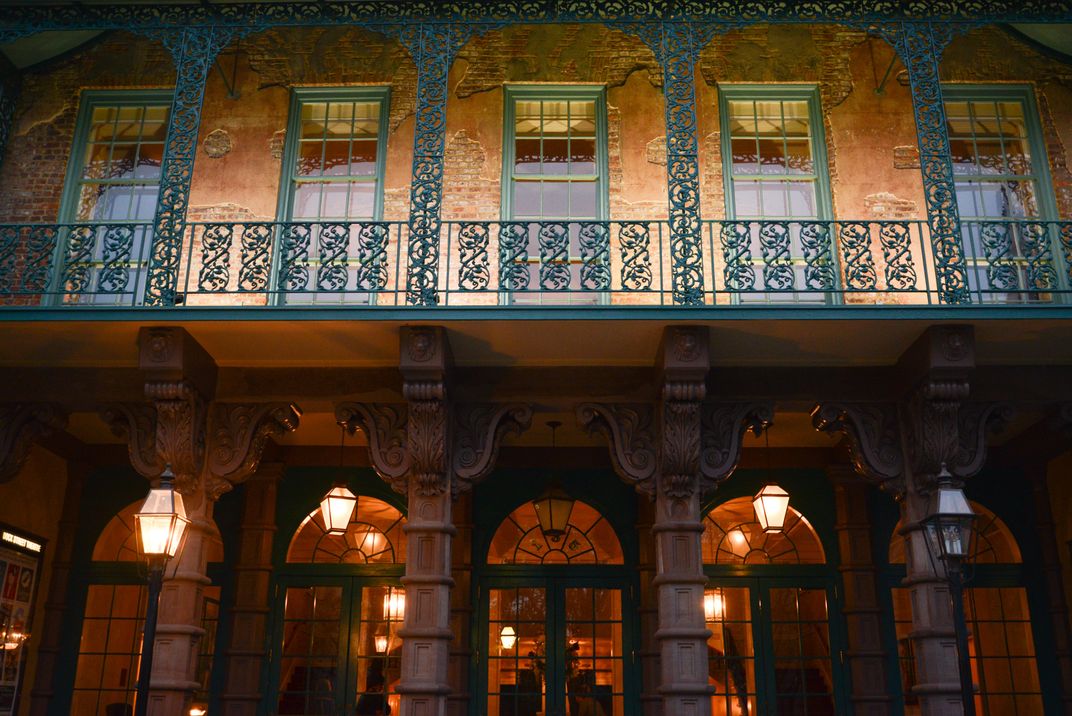
When the Dock Street Theatre opened in 1736, on the corner of Church Street and Dock Street (now Queen Street), it was the first building in the country that was specifically built for theater performances. The opening show was The Recruiting Officer, and shortly after, the theatre hosted one of the country's first opera performances, Flora: Or Hob in the Well. Four years later, a massive fire in Charleston destroyed the building. It was rebuilt in 1809 as the Planter’s Hotel, a home for South Carolina planters who were in town for the horse-racing season. The hotel was slated for demolition in 1935, when Pringle and other concerned citizens lobbied for it to be saved—leading to the building's owner, Milton Pearlstine, handing it over to the city. It became a public works project, and it transformed into the new Dock Street Theatre, which opened to the public in 1937. It remains in operation today, with around 10 performances per season by Charleston Stage, South Carolina's largest professional theater company. The property underwent another renovation in 2010, introducing modern technology to the stage.
Joseph Manigault House
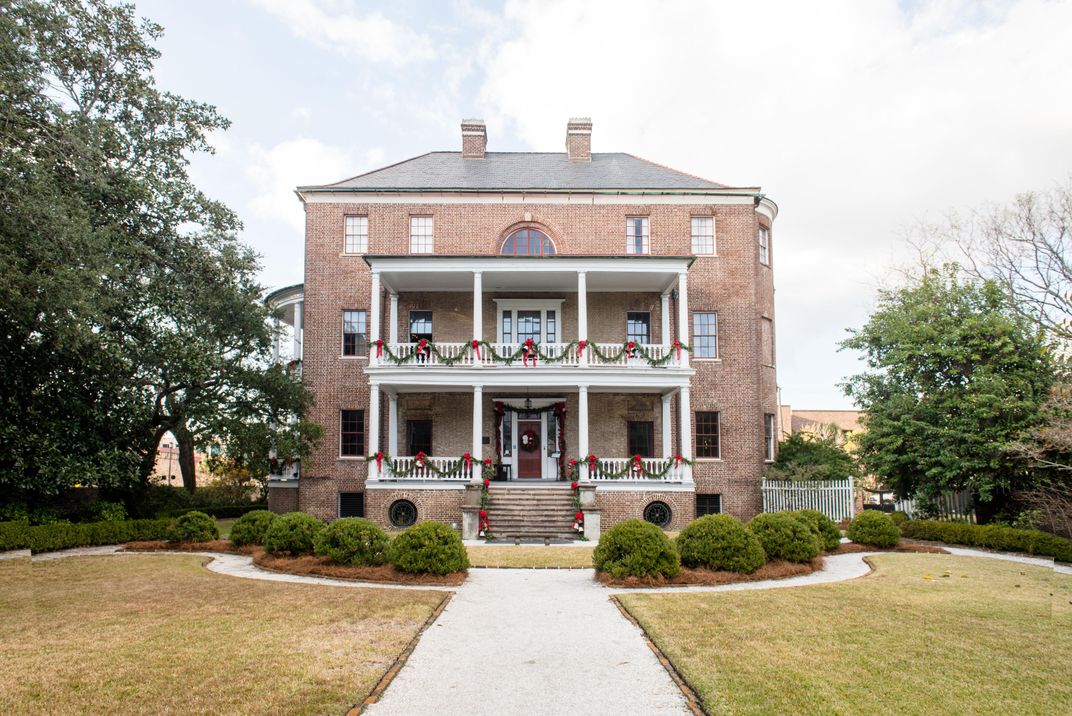
Gabriel Manigault designed and built this home for his brother Joseph sometime between 1790 and 1803. The Manigaults had risen to fame in South Carolina as successful merchants and rice planters; when Joseph moved into this house, he owned several plantations and more than 200 enslaved laborers. By 1920, the property was dilapidated, with planned destruction to make way for a new service station. Frost, seeing the importance of keeping the historical structure intact, planned a meeting focused on saving the house that would lead to the formation of the Society for the Preservation of Old Dwellings. Frost's cousin, Nell Pringle, hosted the meeting, becoming the first vice president of the society. At Frost's urging, Pringle and her husband, Ernest, underwrote the purchase of the Manigault House. Though the society was formed because of the home, it didn't help much with the Manigault restoration costs. Pringle was forced to sell her family's bank stock and open the house for fundraising teas, charging 25 cents per cup. Pringle and the society owned it for two years before selling it to the Esso Standard Oil Company; the mortgage payments made it impossible for Pringle to keep it. Unfortunately, by 1933, it was in disrepair again. This time it went up for auction, and a private donor purchased it and donated it to the Charleston Museum. Now the house, restored to its 19th-century splendor and furnished with antique American, French and English pieces, is available for public tours.
Rainbow Row (private residences)
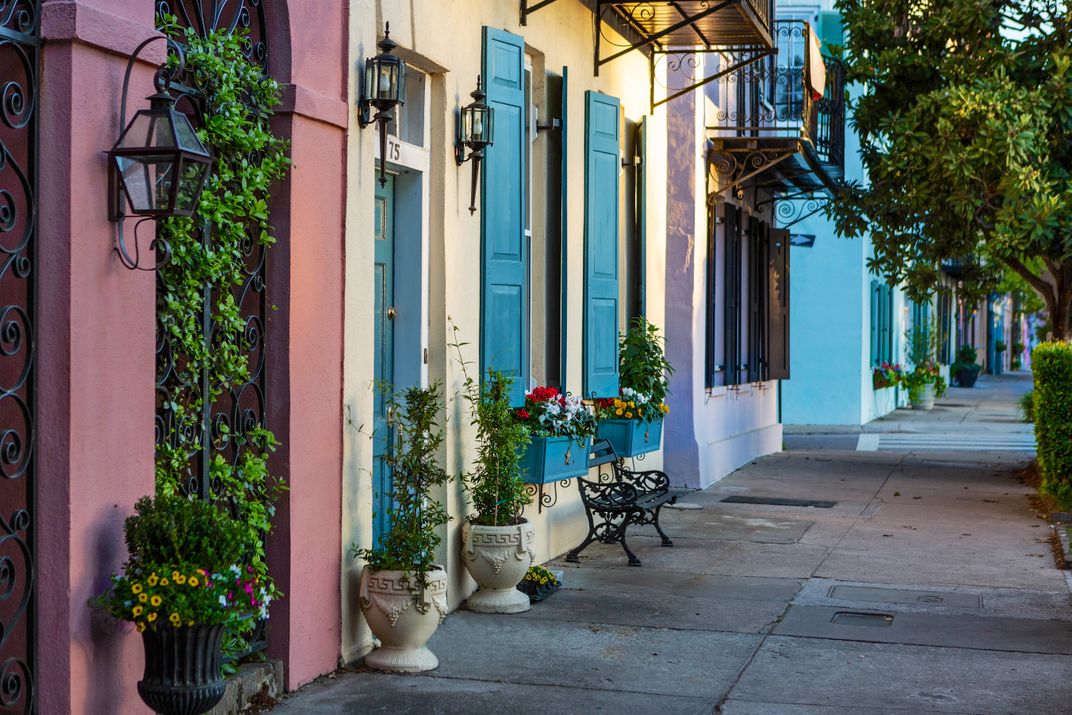
On East Bay Street, in the northeast corner of South of Broad, a row of pastel painted townhomes has been a landmark in Charleston since the 1930s. In the '20s, though, the neighborhood was derelict and slated for demolition. Frost bought six of the homes, which used to belong to merchants who ran shops on the first floor, planning to restore them at a later date. She was never able to raise the funds, though, and ended up selling them to Judge Lionel Legge and his wife, Dorothy, who began the rainbow color scheme by painting their own home pastel pink. There are currently no restrictions on paint colors, but any color changes to the homes on Rainbow Row have to be approved by the city's Board of Architectural Review.
Miles Brewton House (private residence)
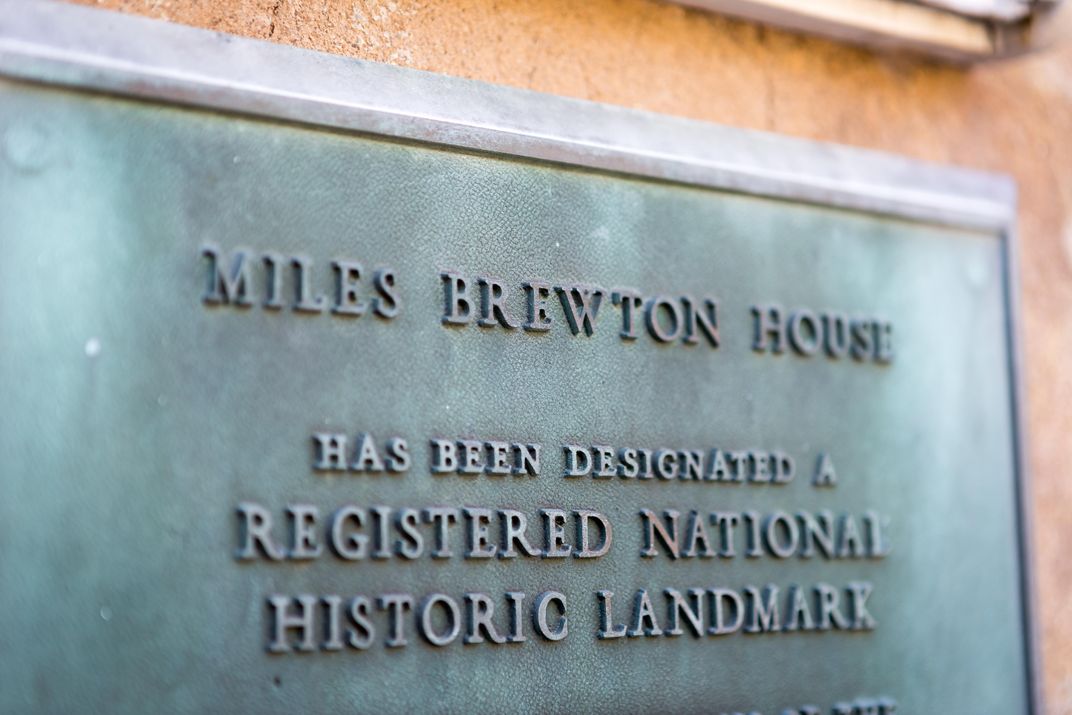
Wealthy merchant Miles Brewton built his home—a Georgian-style townhouse with stacked porticos—at 27 King Street around 1769. His family only lived in it for a few years, though; in 1775, Brewton, his wife, and his children were all lost at sea. Afterwards, his sister Rebecca Brewton Motte—Frost’s great-great-grandmother—took over ownership of the home. The Miles Brewton House was considered such a fine home that when Charleston was occupied by the British from 1780 to 1782, Lord Cornwallis, Lord Rawdon and Henry Clinton used it as a headquarters. Frost helped preserve the house simply by living in it. She was born there, later moved back into it with her sisters in 1919, and lived there until her death. The house remains in the family to this day as a private residence.
Tradd Street (private residences)
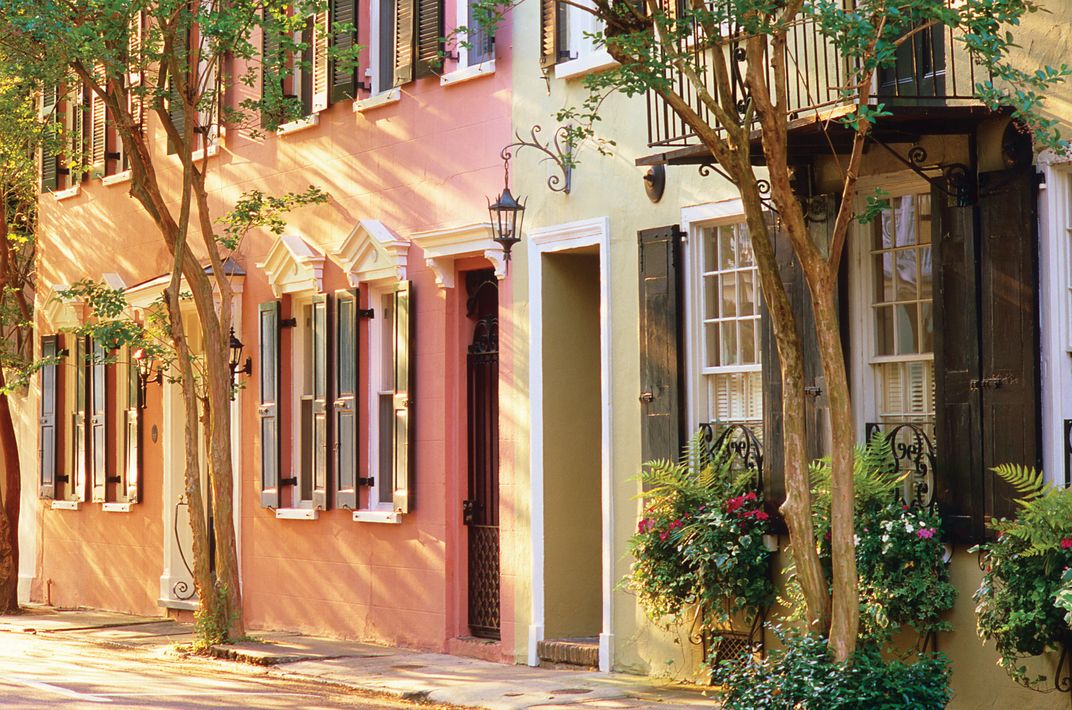
The houses on Tradd Street were some of Frost’s first purchases when she got into real estate. The properties represent a mix of architectural styles, including Federal, Georgian, colonial, Italianate and traditional Charleston Single, an architecture style identified by homes being one room across and longer than they are wide. Frost started with two—financed with money from her stenographer job—and eventually owned 11 buildings on the street. She bought the properties at a low price, fixed them up with Pinckney's help, and either sold them, unfinished, to investors who would take over the work, or rented them out. Often, though, Frost operated in the red, accumulating a large debt to the city that the mayor eventually reduced to honor her preservation work. She preserved so much of Tradd Street, in fact, that she earned the nickname “The Angel of Tradd Street.” The homes are now all private residences, but the street is popular on Charleston history tours that highlight the city's 18th-century merchant homes. At least ten of the houses are historical landmarks. The one at 54 Tradd Street, for example, was home to Charleston's fifth postmaster, who operated the post office out of his front room. Another, at 58 Tradd Street, was owned by Robert Wells in 1778, the largest bookseller and printer in the south; he and his son used the first floor to publish a Tory newspaper, which eventually got them banned from South Carolina.
Planning Your Next Trip?
Explore great travel deals
Smithsonian magazine participates in affiliate link advertising programs. If you purchase an item through these links, we receive a commission.
/https://tf-cmsv2-smithsonianmag-media.s3.amazonaws.com/accounts/headshot/JenniferBillock.png)
/https://tf-cmsv2-smithsonianmag-media.s3.amazonaws.com/accounts/headshot/JenniferBillock.png)